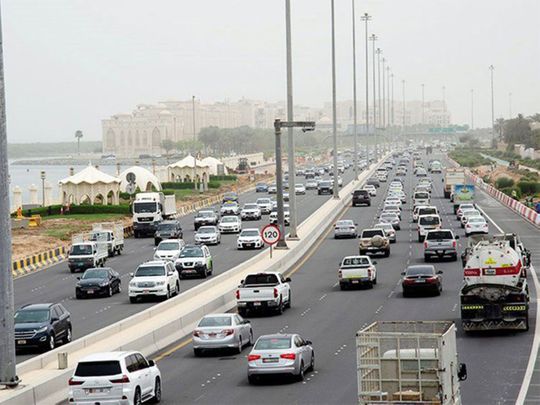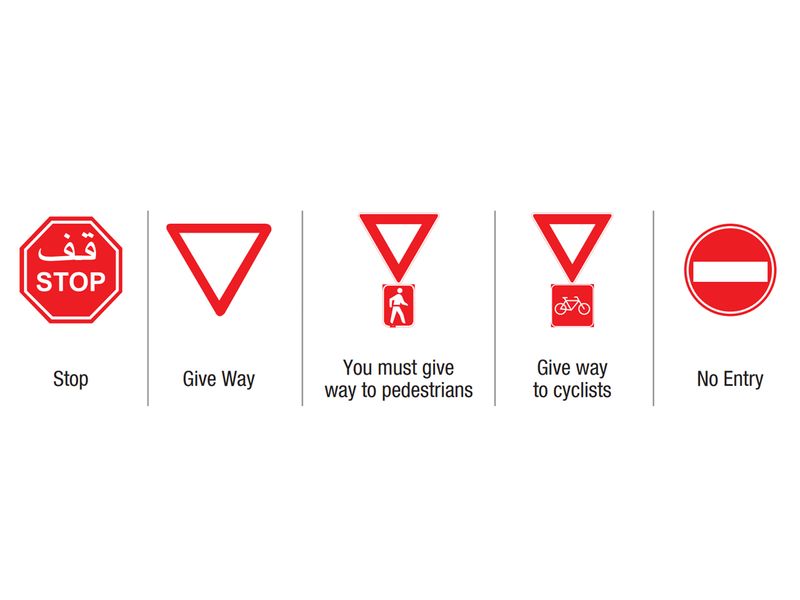
Dubai: Should I stay or should I go? If you find yourself asking this question too often when driving, it is important to familiarise yourself with traffic signs and rules that determine who has the right of way at junctions and intersections.
The UAE’s newly issued traffic law, Federal Decree-Law No. 14 of 2024 on traffic regulation, which will come into effect next year, also has an article stipulating what you should do in the absence of any such signs.
Here is all you need to know:
What are the traffic signs you need to look out for?

There are different traffic control signs that determine who gets right of way. For example, if you see a stop sign, it means that you have to come to a complete stop at the junction, and check for incoming traffic. Only if the road is clear can you enter the road.
The upside-down triangle with a red border means give way, but you may also see another sign accompanying this – one with a pedestrian, and the other with a bicycle. This indicates that at the junction, you need to give way to pedestrians or cyclists.
Finally, the no entry sign is a red circular board, with a white line in the middle.
New traffic rules
While most junctions have clear signboards that inform motorists when they should give way, what happens in case you are in an area where such a signboard isn’t available?
According to Article 6 of the new traffic law, which is titled ‘traffic priority’, there are certain rules that will come into play.
Firstly, you need to see if a traffic police official is directing traffic, and in such a case you simply need to follow the directions being given to you on when you should stop and when you should go.
Next, if you are at an intersection or junction, always remember that priority is given to traffic coming from the main road.
In case both roads are of a similar priority, or if you are at a roundabout or intesection, priority is given to motorists coming from the left.
According to the article, in all cases, traffic priorities shall be as follows:
1. Official processions.
2. Civil defence vehicles on duty.
3. Vehicles intended for transporting patients and wounded persons while performing their duties.
4. Military vehicles moving in convoys.
5. Police vehicles when using warning sounds and lights.
6. Vehicles that provide essential services and are determined by a resolutions issued by the Minister of Interior.











